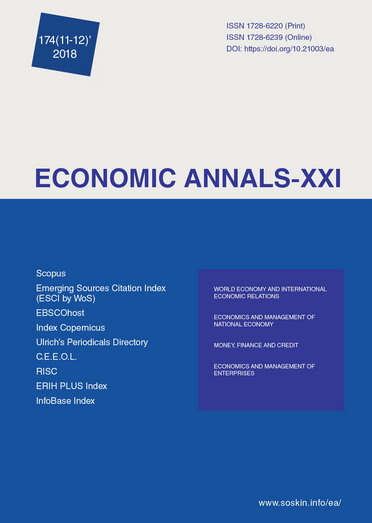Tax gap management: theory and practice
Tax gap management: theory and practice
Author(s): Tetiana Kosova, Nataliya Slobodyanyuk, Hanna Polzikova, Anna ŠatanováSubject(s): Public Finances, Fiscal Politics / Budgeting
Published by: Institute of Society Transformation
Keywords: Theory; Methodology; Grounds; Gap Management; Risk; Taxation;
Summary/Abstract: Introduction. The focus of the study is determined by the urgency of the task to increase the budgetary income, which is one of prerequisites for successful breakthrough of Ukraine in military-political and socio-economic crisis. Purpose: to ground the concept of application of the gap-management for better sustainability of the budgetary system. The research subject is the views on tax gap prevention, and their effectiveness in domestic practice. We were reviewing theoretical, methodological and practical foundations of tax administration improvement. Methodologically research is based on gap-management theory. Results. Specific misbalances inherent to the tax systems are generalized by the authors, i.e. between the outcomes of progressive and flat taxation, between public income and expenses at different level of government, in foreign economic activity depending on the location of VAT taxation, in the internal processes of defining tax credit on VAT, and in the time gap between consolidation of the GDP and generation of tax income to the budget. Based on critical assessment of the tax risk management, five stages of process were defined: exposure of risks, their evaluation, determination and introduction of the counter-measures, efficiency assessment of the results. Conclusion. The results are grounded in the critical comparative analysis of the practice of tax management in Ukraine and of the established international practices. The international standards of introduction of fiscal transparency, sustainability, and tax risk management were analysed in their interconnection and mutual impact. We introduced the model which explained strategic mechanisms and principles of state tax management by the shift of emphasis in the system of tasks from achieving of the planned indicators of tax income to the budget, to the minimization of the tax gap. On the practical side, our research provides recommendations for long-term prognoses on the tax income and reporting on the fiscal risks.
Journal: Економічний часопис - ХХІ
- Issue Year: 174/2018
- Issue No: 11+12
- Page Range: 22-28
- Page Count: 7
- Language: English

